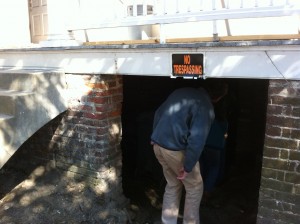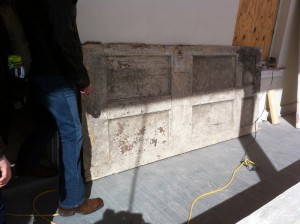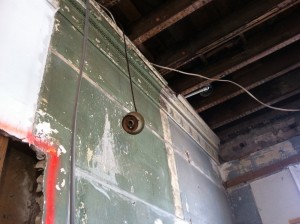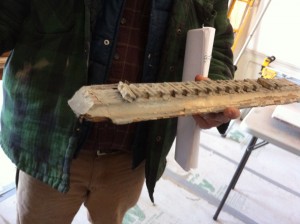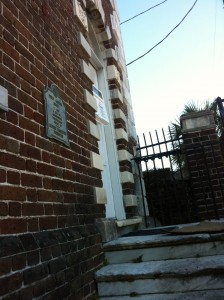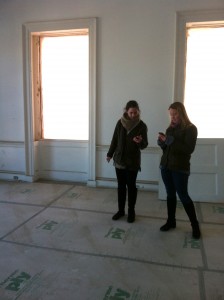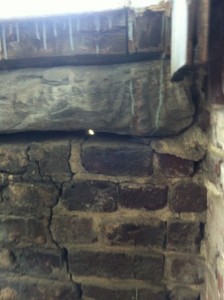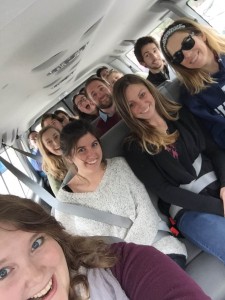It may have been one of the coldest days of the winter so far, but that didn’t prevent Prof. Butler’s project management class from enjoying their site visit to 329 East Bay Street this past Thursday. Tim Sites, project manager for Luxury Simplified Group’s largest current renovation project, was kind enough to let the students tour the house from the ground up. He explained the budget and timeline for the project, introduced the group to several gifted carpenters and tradsemen on site, and gave everyone a chance for some Q and A about his role as project manager for Luxury Simplified, who plans to renovate the house for event and office space. Tim explained that the company is going out of their way to salvage and repair as much as possible, and they’ve already removed several unsympathetic recent alterations to the three story early nineteenth century masonry building, better known as the Gadsden House. Here’s a few pictures of the students enjoying the field trip:
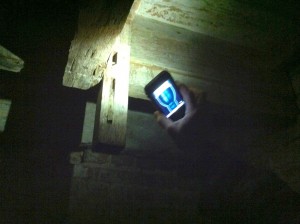
John Key Powell illuminates some interesting joinery in the basement so Butler could snap a picture.

A piece of wainscote paneling, with roman numerals so the original carpenters could join their hand cut rails and stiles into the proper configuration.
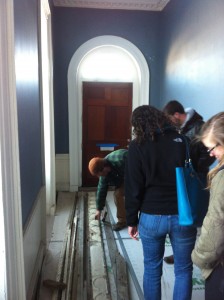
Emily Whisenant and Claire check out a wood and composite multiple layer piece of crown molding removed for restoration.


